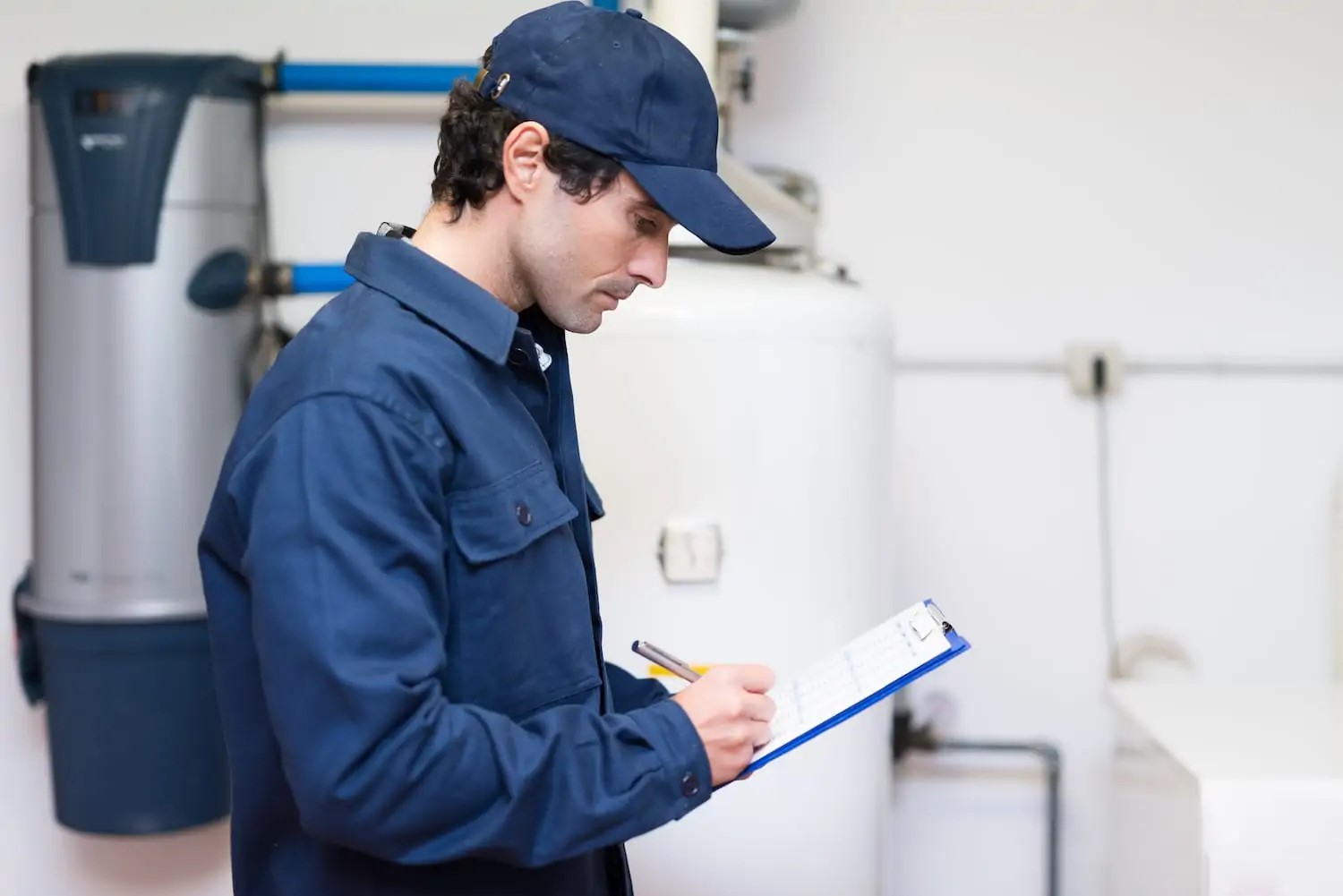
Older gas furnaces frequently draft their flue gasses safely out of the home through a chimney. You may also see a hot water tank venting into that same chimney. But a chimney can’t do its job and vent properly if it is too large for the appliances that are using it. This can potentially lead to condensation of the flue gasses on the inside of the chimney, which can damage it.
High-efficiency furnaces vent their flue gasses out a wall of the home through PVC piping. Without the furnace venting into the chimney, it can now be too large for the flue gasses to draft properly.
The Solution Is To Line The Chimney.
A chimney liner is a metal tube that is installed in a chimney, usually dropped down from above. The hot water tank (or other appliance) vents into that metal tube, protecting the chimney from condensation and allowing the appliance to vent properly and safely.
Usually we are able to access the top of the chimney without too much difficulty, but with a really tall chimney there is no way to get there safely using ladders. In those cases, a cherry picker allows us to safely access the chimney.
Chimney liners come in different sizes and need to be matched to each installation based on variables like height of the chimney, size of the appliances connected and a couple of other factors in the basement/equipment room. Like all other aspects of installing a heating system, the design, engineering and care during installation make the difference between success and failure with the final result.
Lining a chimney is a very important safety precaution when you replace a furnace with a high-efficiency model. Don’t take shortcuts or allow your contractor to skip this vital step.
If you have questions about chimney liners or if your home needs one, call P.K. Wadsworth Heating & Cooling.






